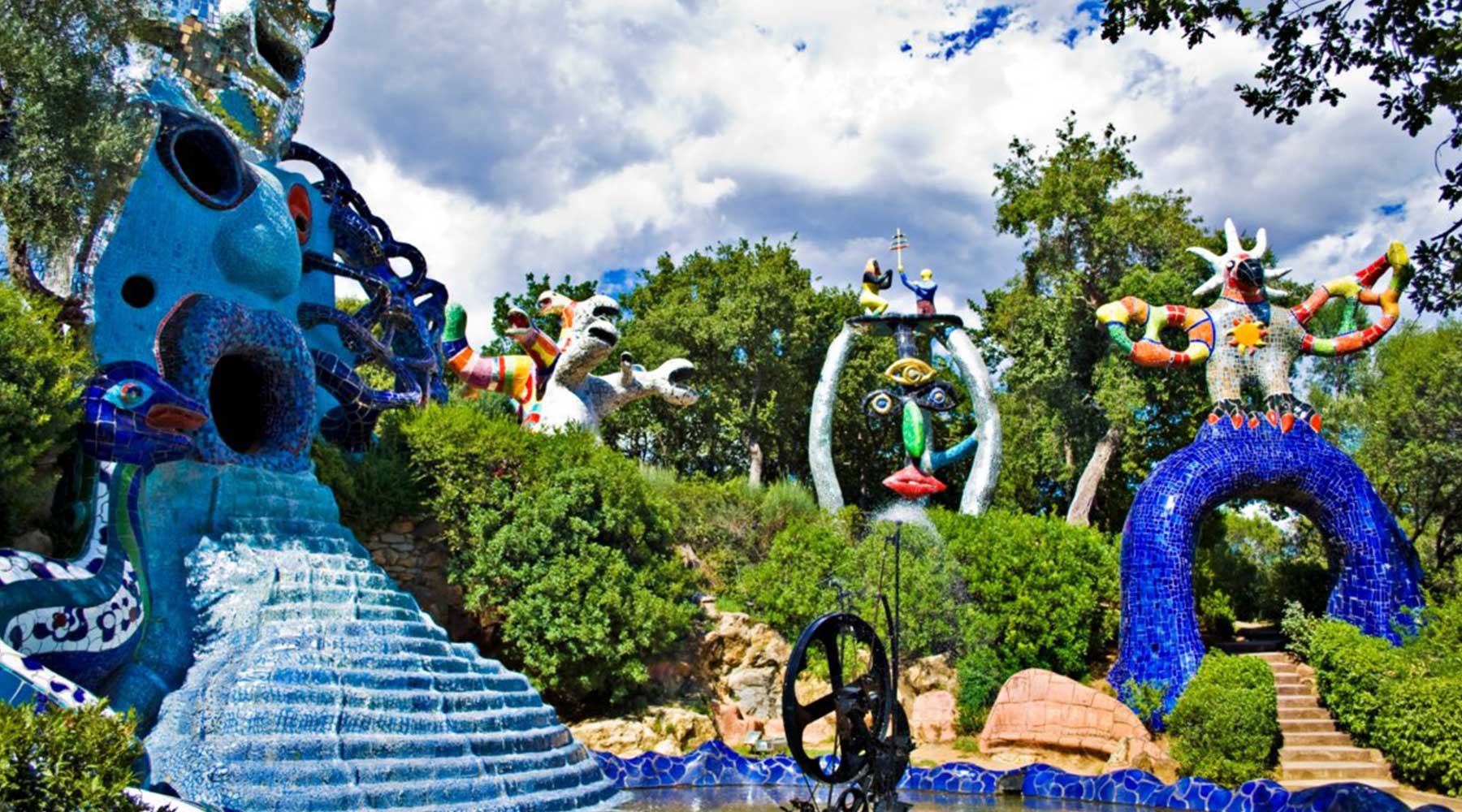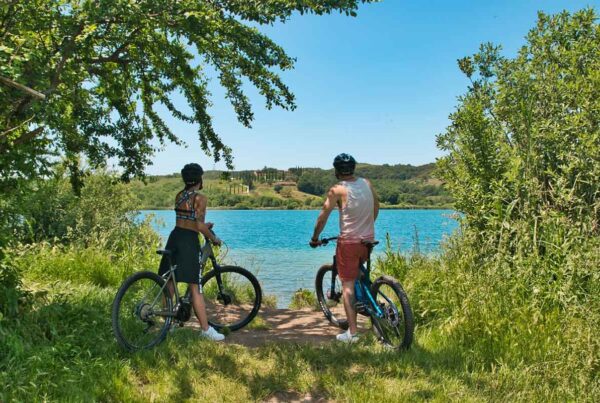Tuscany is a region with a thousand facets and many surprises. It is a diverse territory that offers the visitor unique and very original experiences.
Let’s forget for a moment the art cities, the medieval towns, and the Renaissance villages.
Instead, let’s dive into another Tuscany, made of magic, mystery, hidden locations and mysterious places that fascinate adults, leave teenagers speechless, and make children dream.
The magical places of Tuscany
When we talk about legend and magic our mind returns to the classic tales and stories that we learned through the pages of books and frames of films and cartoons.
In Tuscany there is more than one town that seems to have come out of a writer’s pen:
- The sword in the stone: in the town of Chiusdino, in the Montesiepi Chapel, near the Abbey of San Galgano, we find a real medieval sword stuck in a rock in 1100 by Galgano Guidotti, a rich knight who thrust it as a divine oath of renunciation of worldly goods. Just like in the story of King Arthur.
If you believe you are the legitimate heirs to the throne and the descendants of the lineage, there is only one thing to do: try to draw the sword; - The Tarot Garden: located just south of the town of Capalbio, it is one of the most bizarre and interesting outdoor collections of modern art in Italy. It is a strange and magical garden teeming with works of art and sculptures created by French artist Niki de Saint Phalle in 17 years of work. An immense project that led to the creation of a unique and inimitable park, a feast for the eyes that captivates adults and children alike. The statues are inspired by the figures of the major arcana of tarot cards and conceived starting from an inspiration that the artist had while visiting Antoni Gaudí’s Parque Guell in Barcelona and after that the Garden of Bomarzo. The magical and spiritual dream of the author’s life is identified in the garden: he thus built twenty-two imposing figures in steel and concrete covered with glass, mirrors, and coloured ceramics thanks also to the collaboration of many contemporary artists. Here we can admire the works depicting the Popess, the Magician, the Wheel of Fortune, the Tree of Life, Justice, the Lovers, the Prophet, the Emperor, the Tower, the Empress-Sphinx, Temperance, Death, the Devil, the Fool, the World, the Force.
Unusual destinations in Tuscany
Going beyond the classic tourist destinations allows us to discover something truly new and different that we have never heard of, which can greatly enrich our culture.
This is the case of these two unusual destinations in Tuscany:
- The Bottini of Siena: the underground river that crosses the city. We are used to think of Siena for the Palio, Piazza del Campo, the Duomo. But few know that the city hides 25 km of underground tunnels dug into the tuff by the ancient Romans. A true city within the city, actually below the city. It is a hydraulic engineering masterpiece created to collect rainwater and distribute it to the homes. A peculiarity that even influenced Dante. In the Divine Comedy he wrote that under Siena flowed the Diana, a mythical river that has never been identified;
- The Castle of Sammezzano: located in Leccio, a hamlet of Reggello, it is a unique Orientalist art structure. It was a hunting lodge in the Medici era and was then purchased by Ximenes of Aragon. In the mid-nineteenth century the Marquis Ferdinando Panciatichi Ximenes of Aragon ordered those works that made it a unique building. Inside the castle there are tributes to architectural masterpieces of Moorish art, such as the Alhambra in Granada and the Indian Taj Mahal. On the monumental floor we find many rooms with stunning colours and fantastic plays of light. All the rooms offer the possibility of experiencing a virtual journey to the East, China, Arabia, Spain, but we also find references to the Western tradition, writings and aphorisms on the architectural elements that reveal the personality of the Marquis. For the design he drew from books, engravings, and images. Equally magical are the exteriors, with the double facade of the castle representing the sun and the moon, which dominates the hill above Leccio, suggesting the marvels inside already at first glance. The marquis personally supervised the works and also took care of the large centuries-old park around the house, populated by a large variety of plants, including specimens of giant sequoia imported directly from North America.
Mysterious places in Tuscany
Then there are places and towns that give us stories that are sometimes mysterious, sometimes unsettling, and sometimes surreal.
Places worth a visit because they lead us to a magical and fascinating territory.
Among these we highlight:
- Lake Vagli and the ghost town: in Vagli Sotto, in the province of Lucca, we find a lake formed artificially following the construction of a hydroelectric dam. The waters submerged some villages, including Fabbriche di Careggine, an ancient village of medieval origin inhabited by blacksmiths and abandoned in 1947. Amazement and magic welcome the observers when the village re-emerges following the emptying of the lake for dam maintenance operations. It happened four times: in 1958, in 1974, in 1983, in 1994.
- The Devil’s Bridge: in Borgo a Mozzano, in the province of Lucca, we find a bridge that is different from all the others in terms of characteristics, look, and the legends it has generated over the years. It is the Maddalena Bridge, renamed Devil’s Bridge because of a popular legend. The story says that the person in charge of the construction of the bridge, worried by the deadline, promised the Devil the soul of the first person who would cross the bridge in exchange for its construction in just one night. The eerie appearance of the bridge lends itself perfectly to legends of this kind and is still to this day one of the unusual destinations in Tuscany. It is indeed the setting for one of the most beautiful Halloween fairs in Tuscany, the Halloween Celebration, which is held in Borgo a Mozzano from 29 to 31 October every year and culminates with the Wrath of Lucifer, the fireworks show on the bridge during the evening of 31 October.
Panoramic places in Tuscany
Then there are places that offer breath-taking panoramic views but also simple landscapes that have rightfully entered the collective imagination of all of us.
Postcard-like places you can take a picture of or a selfie at to always carry with you.
Among the most beautiful panoramic places in Tuscany, we highlight:
- Chiusure and surroundings of Asciano: if you want to admire a typical Tuscan scenery you have to do it from here. Visit the small town of Chiusure and the Abbey of Monte Oliveto Maggiore and travel around Asciano moving between small and secondary streets. You will find yourselves walking along streets with rows of cypresses with the profiles of the Crete Senesi in the background. Among the unmissable roads are the Pecorile provincial road with an extraordinary panorama visible near the Baccoleno farmhouse and the provincial road 438 which leads from Asciano to Siena;
- Piazzale Michelangelo: the panoramic place of Tuscany par excellence can be found in Florence. It is a large terrace that overlooks the entire city and the surrounding areas. A location that lets you take incredible souvenir photos, and admire the skyline of the capital but also the surrounding areas, not to mention the spectacular sunsets. It was built in 1869 by Giuseppe Poggi and is dedicated to artist Michelangelo Buonarroti, whose David (a copy of the original) is in the centre of the square. From here we can observe Ponte Vecchio, the tower of Palazzo della Signoria, the Duomo and its bell tower, the Church of Santa Croce.
Hidden towns in Tuscany
There are, then, alternative destinations compared to the canonical ones. Hidden but no less important. Indeed, capable of arousing unique emotions and letting us discover aspects and treasures of Italy we did not know existed.
Among these stand out:
- Isola Santa: it is a small abandoned village, located in the centre of the Apuan Alps. It is located on the shore of a small mountain lake, surrounded by chestnut woods. Built during the Middle Ages at 550 meters above sea level, it rests on the ruins of an ancient hospice where wayfarers who crossed the Apuan Alps stopped. It is a perfect place for those who love to stay in nature and enjoy the beauty of unique natural landscapes and the charm of silence. Also ideal for those who love to pick mushrooms, fish for wild trout, and go hiking;
- Fosdinovo and Lunigiana: Lunigiana is a land rich in traditions, flavours, and dialects. Of great historical importance and divided between the provinces of La Spezia and Massa-Carrara, it captivates with its villages hidden in the hills. Among these stands out Fosdinovo, which houses the Malaspina Castle, excellently preserved and also famous for having hosted Dante during his exile. The interior captures you with the Piazzetta of the Cannons and the many frescoes, the antique furniture, the circular ‘trap’ room in the midday tower. You then stroll through the centre of the village guided by the project of the outdoor Museum, created by documenting every corner with didactic panels and certified with the Bandiera Arancione (Orange Flag) of the Italian Touring Club.








